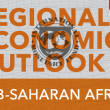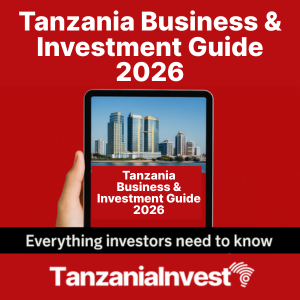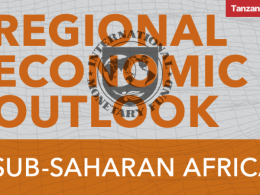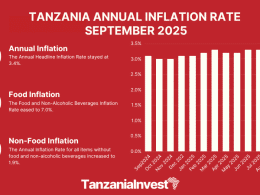The World Bank (WB) has recently released its 18th Tanzania Economic Update (TEU) under the title “Clean Water, Bright Future: The Transformative Impact of Investing in WASH”. We provide a summary with the key takeaway points.
The TEU is a biannual report describing the recent evolution of Tanzania’s economy, and each edition highlights a subject of critical interest to policymakers.
This 18th edition stressed that while the country has made significant progress in recent years in improving access to Water Supply, Sanitation, and Hygiene (WASH) services, only 61% of households have access to basic water supply, 32% to basic sanitation, and 48% to basic hygiene.
And “Achieving WASH goals can support the jobs agenda while mitigating the adverse effects on workforce productivity and advance Tanzania’s objectives for inclusive growth and poverty reduction,” said Nathan Belete, World Bank Country Director for Tanzania.
Recent Economic Developments
The report indicates that strong macroeconomic fundamentals allowed Tanzania to emerge from the pandemic in good shape, but its recovery has been relatively moderate due to the strong headwinds created by the Russian invasion of Ukraine.
While Sub-Saharan Africa (SSA) experienced an aggregate contraction of 2% in 2020, GDP growth in Tanzania remained positive at 2% before rising to 4.3% in 2021, just above the SSA average of 4.2%.
Tanzania Actual & Potential GDP Growth 1999-2021 (% change, y/y)
In 2022, Tanzania’s quarterly growth rate decreased from 5.5% in Q1 to 4.8% in Q2, an average improvement of 0.8% points over the same period in 2021.
However, the pandemic caused the poverty rate to rise from 26.2% in 2019 to 27% in 2021, and only a minor reduction in the overall poverty rate based on the national basic-needs poverty line is anticipated in 2022.
However, rapid population growth and the economic shock of the pandemic have greatly increased the number of Tanzanians living in poverty, which could worsen the country’s already-low productivity growth rates, public spending levels, and social indicators for years to come.
Inflation in Tanzania has been relatively modest by regional standards, but elevated food and fuel prices are undermining consumption among lower-income households.
A relatively stable exchange rate, coupled with fuel subsidies, helped contain consumer price inflation to just 4.8% in September 2022, well below the regional average of 10%.
Tax and customs revenues have steadily increased and are now approaching their pre-pandemic levels. While recurrent expenditures have remained broadly unchanged relative to GDP, implementing major investment projects in energy and transportation has driven a steady increase in development spending.
Tanzania Tax Revenue by Component 2017-2022 (% of GDP)
Tanzania’s public and publicly guaranteed debt remain relatively low as a share of GDP.
Economic Outlook
While the recovery is projected to continue, a deteriorating external environment poses serious risks to the macroeconomic outlook.
The GDP growth rate is projected to reach 5.3% in 2023 as investment increases and the terms of trade improve, but actual growth will remain well below Tanzania’s estimated long-run potential growth rate of about 6%.
Tanzania GDP and Population Growth Rates 1993-2023 (% change, y/y)
Further increases in food and fuel prices, faltering global demand growth, additional interest-rate hikes in advanced economies, and/or local climate-related shocks such as floods and droughts could derail Tanzania’s recovery.
Tanzania Real GDP Growth Forecasts under Alternative Scenarios 2023-2024 (% change, y/y)
Priority Reforms
To sustain rapid growth and achieve its development aspirations, Tanzania must accelerate structural reforms. While the country’s economic performance has been impressive historically, Tanzania faces new challenges that threaten its development momentum.
Slow progress on reforms during previous administrations weakened private investment, which was gradually being replaced by public investment.
Over the medium term, boosting private investment and private-sector activity will be vital to Tanzania’s growth and development.
For this, further structural reforms will be needed to revitalize the economy and promote sustainable and inclusive growth.
In addition, inadequate WASH access—the subject of this WB report—has deeply negative effects on workforce productivity, which threaten the government’s objectives for growth and poverty reduction.
Water Supply, Sanitation and Hygiene (WASH)
The Bank stresses that water, sanitation and hygiene (WASH) services play a vital role in poverty reduction and economic growth and explains that improving the quality of WASH services could have a transformative impact on Tanzania’s social and economic development.
Despite significant progress in recent years, much of Tanzania’s population lacks access to adequate WASH services. Just over 64% of households have access to the basic water supply system, 32% have access to basic sanitation services and 48% have access to basic hygiene, according to SDG definitions.
More than 9% of the population continues to practice open defecation, which entails serious health risks.
Rural areas lag urban centres in all dimensions of WASH, and in most rural areas all basic coverage indicators are below 50% (note coverage of improved water in rural areas is 54%).
Access to WASH Facilities in Tanzania in 2020
Without access to clean drinking water, sanitary facilities, and waste-management systems, preventable diseases spread unchecked.
Death and disease are the most immediate consequences of inadequate WASH access, and their burden falls most heavily on women, children, and the poor and vulnerable.
WASH-related illnesses consume the working hours of adults, lessen the educational attainment of students, impair the cognitive development of children, and end the lives of young and old alike.
Inadequate WASH access also has deeply negative effects on workforce productivity, which threaten the government’s objectives for growth and poverty reduction.
The Bank stresses that providing universal WASH access in Tanzania will require a considerable upfront investment, but the devastating consequences of inadequate WASH access make such investment highly cost-effective.
In 2006, Tanzania launched its ambitious Water Sector Development Program (WSDP) for 2006–2025, which it has operationalized in three phases.
More than USD 1.4 billion was committed under the WSDP-1, followed by another USD 1.53 billion under the WSDP-2. The current phase, WSDP-3 (2022–2026), is by far the most ambitious, and its financing requirements are estimated at USD 6.5 billion.
The Plan targets close to universal access to WASH services in both rural and urban areas, and includes service levels above the basic WASH standard defined by the WHO/UNICEF Joint Monitoring Programme.
Financial Requirements of Tanzania WSDP-3 (2022–2026) in USD
Yet achieving universal access to basic WASH could reduce Tanzania’s economic losses by USD 1.9 billion per year by 2030.
Within five years, these savings would enable the government to generate benefits equal to its initial investment of USD 4.1 billion.
In addition, achieving the goals of the WSDP-3 would create thousands of sustainable jobs and contribute to the livelihood of millions of the population whose livelihoods depend on a reliable water supply.
The Bank concludes that implementing the WSDP-3 strategy and later achieving universal WASH for all will require a combination of policy measures, institutional capacity building, and new financial arrangements at the national, subnational, and community levels.
















